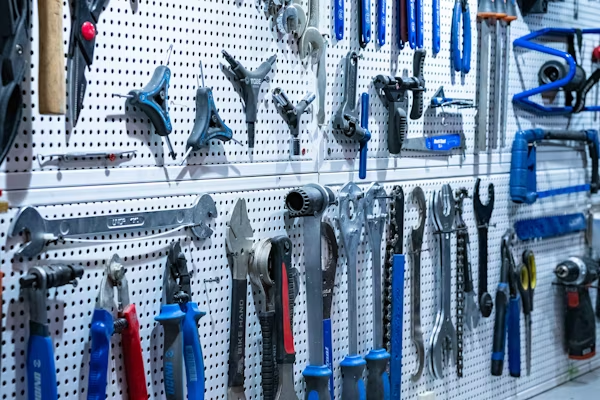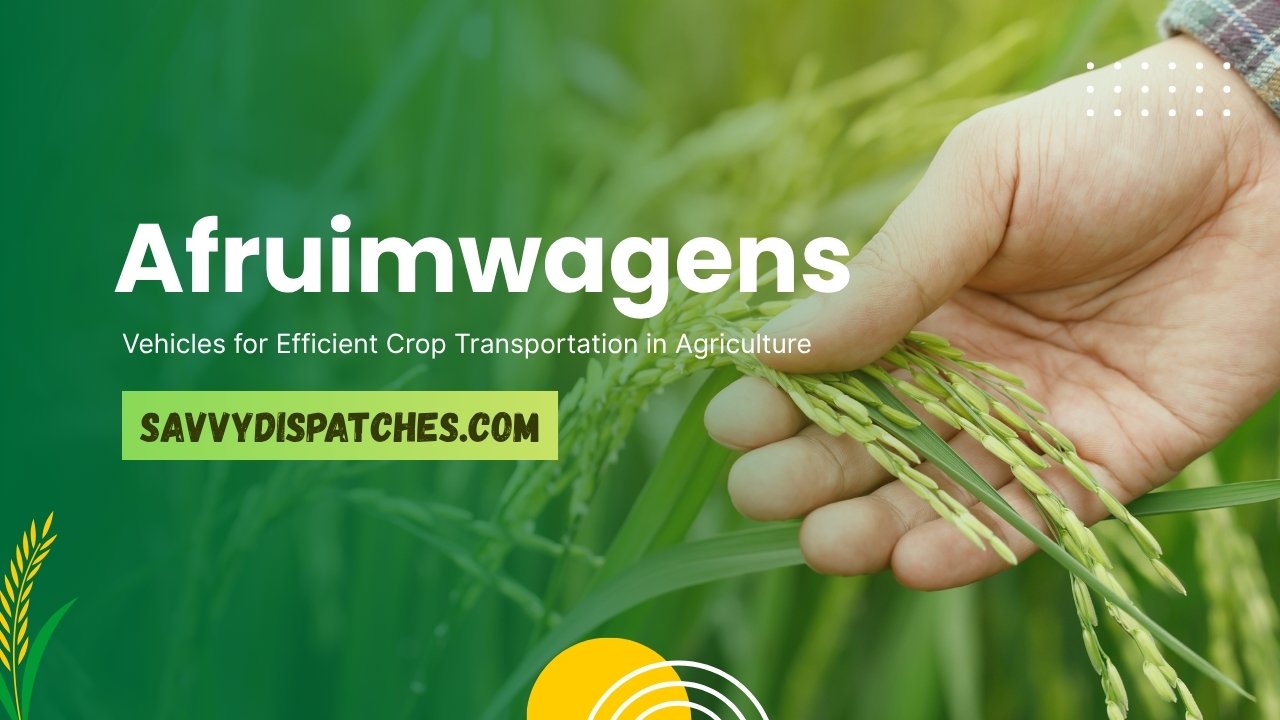Tips & Guides
Why Do Small Rural Towns Turn Into Tourist Traps?

Picture this: a quaint, small rural town nestled between rolling hills and shimmering lakes. Its sleepy streets are lined with charming shops, friendly locals wave as you stroll by, and the air is filled with the scent of homemade pies. But wait—what’s that? Suddenly, tourists flock in droves to snap selfies next to oversized roadside attractions or queue up for hours at trendy eateries. Why Do Small Rural Towns Turn Into Tourist Traps?
So why do small rural towns become tourist traps? This phenomenon isn’t just about location; it’s a blend of history, marketing savvy, and evolving cultural dynamics. These transformations can reshape communities while offering new opportunities—and challenges—to both residents and visitors alike. Let’s dive deeper into how seemingly unassuming towns end up on everyone’s must-visit list.
Examples of Popular Tourist Trap Towns and Their History
One iconic example is Gatlinburg, Tennessee. Nestled in the Smoky Mountains, it began as a small mountain town but blossomed into a bustling tourist hub with attractions like the Great Smoky Mountains National Park and countless souvenir shops.
Another notable mention is Sedona, Arizona. Originally a quiet agricultural community, its stunning red rock formations caught the attention of artists and outdoor enthusiasts alike. Today, it’s known for its vortex sites and thriving wellness tourism industry.
Then there’s Bar Harbor, Maine. Once a serene coastal village, it became famous due to Acadia National Park’s breathtaking views. The influx of visitors turned this quaint spot into a vibrant marketplace filled with restaurants and boutiques.
Each of these towns showcases how unique charm can transform into commercial frenzy over time. Their histories reflect not just growth but also adaptation to an ever-increasing number of tourists seeking experiences that feel authentic yet are often manufactured.
The Role of Marketing and Media in Promoting These Towns as Destinations
Marketing and media play a crucial role in transforming small rural towns into sought-after tourist destinations. Social media platforms, travel blogs, and influencers showcase these hidden gems to millions. Picturesque landscapes and charming local traditions are highlighted, capturing the imagination of potential visitors.
Destination marketing organizations often collaborate with local businesses to create enticing promotional materials. They leverage storytelling to emphasize unique experiences, be it artisanal crafts or seasonal festivals. This narrative resonates well with travelers seeking authenticity.
Online reviews further amplify this trend. Positive testimonials can quickly elevate a town’s status within the travel community. Consequently, word-of-mouth spreads like wildfire through forums and social networks, making once-unknown spots popular attractions.
As interest grows, targeted advertising campaigns emerge. These efforts aim to entice tourists by showcasing what sets each town apart from others in their region or country, making them must-visit locations on any traveler’s itinerary.
Impact on Local Economy and Culture
The influx of tourists into small rural towns can significantly boost the local economy. Businesses thrive on increased foot traffic, leading to job creation and new opportunities. Restaurants, shops, and attractions often see a surge in revenue during peak seasons.
Yet, this economic growth comes with challenges. As demand rises, some locals may find it difficult to afford housing or essential services due to inflated prices catered towards visitors. The charm that initially attracted tourists can become overshadowed by commercialization.
Culturally, an evolving identity emerges as local traditions adapt to suit tourist preferences. Festivals might shift focus from community heritage to entertainment spectacles designed for outsiders. This transformation can dilute authentic experiences that once defined these towns.
While tourism injects vitality into the economy, it also poses risks that threaten cultural integrity and long-term sustainability. Balancing growth with preservation becomes crucial for communities navigating their newfound popularity.
Factors that Contribute to the Transformation from Small Town to Tourist Trap
Several factors contribute to the transformation of small rural towns into tourist traps. One major element is accessibility. As roads improve and travel becomes more convenient, hidden gems are suddenly within reach for many.
Social media plays a pivotal role, too. A stunning photograph shared on Instagram can turn an unknown village into a must-see destination overnight. The power of viral marketing cannot be underestimated.
Additionally, local attractions often spark interest. Natural wonders or unique cultural experiences draw visitors in droves, leading to increased foot traffic and business opportunities.
Economic incentives also come into play. Towns may embrace tourism as a means to boost their economy, attracting investments that reshape their identity.
Community engagement shapes this evolution. Residents might rally together to showcase what makes their town special, inadvertently transforming it into an attraction point, sometimes at the cost of its original charm.
How Locals and Businesses Adapt to Cater to Tourists
As small rural towns embrace their role as tourist traps, locals and businesses find innovative ways to adapt.
Local entrepreneurs often pivot towards tourism by opening shops that showcase regional crafts or food specialties. A bakery may start offering guided tours of its production process, turning a simple loaf into an experience.
Restaurants enhance menus with unique local flavors, drawing in visitors eager for authentic cuisine. Seasonal festivals become essential events, providing entertainment while highlighting community culture.
Residents also engage directly with tourists through homestays or property rentals. This not only creates income but fosters connections between visitors and the town’s heritage.
Communication channels flourish too; social media becomes a vital tool for sharing local stories and hidden gems. By actively participating in their transformation, locals ensure their voices are heard amidst commercial pressures, keeping the spirit of their community alive while catering to curious travelers.
The downside of becoming a Tourist Trap
Becoming a tourist trap can come with significant downsides. One of the most immediate issues is overcrowding. Small rural towns aren’t equipped to handle large influxes of visitors, leading to cramped streets and long wait times at local attractions.
The environmental impact is another concern. Increased foot traffic means more waste, which can lead to pollution in natural areas that once thrived. Littering and damage to delicate ecosystems often follow suit as well.
Perhaps the most poignant downside is the loss of authenticity. As businesses cater primarily to tourists, traditional shops and local culture may fade away in favor of generic souvenirs and commercialized experiences. This shift not only dilutes community identity but also robs visitors of genuine encounters that make travel memorable.
In this rush for profit, small towns risk transforming into facades rather than preserving their unique charm and character.
Conclusion
As the allure of small rural towns continues to grow, finding sustainable alternatives becomes increasingly important. Communities can prioritize eco-friendly practices that enhance their charm without sacrificing authenticity. This involves promoting local artisans and farmers’ markets over mass-produced souvenirs.
Encouraging visitors to engage in outdoor activities—such as hiking or birdwatching—can help preserve natural beauty while providing unique experiences. Establishing guidelines for tourism can also protect these areas from overcrowding and environmental damage, ensuring they remain vibrant for future generations.
Small towns can foster partnerships with organizations focused on responsible travel, creating a balance between welcoming tourists and maintaining the integrity of local culture. By highlighting what makes them special—a rich history, stunning landscapes, or unique traditions—they can attract quality visitors who appreciate rather than exploit those attributes.
The goal is to create an environment where locals and tourists coexist harmoniously. Sustainable practices ensure that these towns retain their character while still sharing their stories with the world.
Tips & Guides
Why Investing in Quality Tool Holders Pays Off Long-Term

Every machinist knows the importance of sharp cutters and precision machines, but one component often overlooked in the equation of accuracy and efficiency is the tool holder. The tool holder serves as the crucial connection between the spindle and the cutting tool, ensuring the transfer of power, stability, and precision. Even the most advanced CNC machine or premium end mill can’t perform to its full potential if it’s held in a low-quality or worn-out holder.
Investing in high-quality tool holders isn’t just about immediate performance—it’s an investment in long-term productivity, consistency, and savings. From reducing vibration and improving surface finish to extending tool life and protecting your spindle, a well-designed holder plays a pivotal role in every machining operation.
How Tool Holder Quality Impacts Precision and Productivity
Tool holders are the unsung heroes of precision machining. Their job may seem simple—securely grip the cutting tool—but the quality of that grip determines how efficiently and accurately your CNC operates. Inferior holders can introduce runout, imbalance, and vibration, each of which can significantly impact the quality of your cuts.
Runout, for instance, occurs when the cutting tool’s rotation axis is slightly offset from the spindle’s centerline. Even a small deviation can cause uneven wear on the tool’s cutting edges and compromise dimensional accuracy. Over time, this leads to poor surface finishes, shortened tool life, and wasted material.
High-quality CNC milling tools require precise alignment and stability to perform at their best. A premium holder ensures that alignment is consistent, maintaining concentricity even at high spindle speeds. The result? Smoother cuts, better finishes, and reduced machine strain.
Another key advantage of superior tool holders is their ability to minimize vibration. Vibration not only affects accuracy but also generates excess heat, which dulls cutting edges faster and can damage spindle bearings. Balanced holders distribute forces evenly, keeping the spindle running smoothly and extending both spindle and tool lifespan.
Furthermore, high-quality holders provide better clamping consistency. They maintain uniform grip pressure across the tool shank, preventing micro-movement during operation. This stability is essential for high-speed and heavy-duty machining tasks, where even a fraction of looseness can lead to catastrophic tool failure.
Precision machining requires predictable results. With premium holders, every setup, tool change, and production run delivers repeatable performance—no unexpected chatter, no premature wear, just consistent accuracy.
Long-Term Savings and Performance Benefits of Premium Holders
At first glance, the cost of premium tool holders may seem higher than budget options. However, when you consider the total cost of ownership—factoring in tool wear, downtime, rework, and machine maintenance—the investment quickly pays for itself.
- Extended Tool Life
One of the most immediate returns on a quality tool holder is increased cutting tool life. A secure, balanced connection minimizes deflection and vibration, allowing tools to cut more efficiently and stay sharper longer. Over time, this reduces the frequency of tool changes and lowers overall tooling costs. - Better Surface Finish
A stable holder produces smoother surfaces without secondary finishing operations. This not only improves part quality but also saves time, especially on tight-tolerance components where rework can be costly. - Reduced Machine Wear
Vibration and imbalance put enormous strain on the spindle and bearings. Premium holders that maintain precise balance and alignment protect these components, extending your CNC machine’s service life and reducing repair costs. - Higher Productivity
Because quality holders allow you to run at higher speeds and feeds safely, you can increase material removal rates without compromising accuracy. This means faster cycle times, higher throughput, and better ROI on your machines. - Consistency Across Jobs
When you rely on the same high-quality holders for multiple tools and jobs, you eliminate the guesswork from setup. Offsets remain consistent, programming is simplified, and the risk of error drops dramatically.
Another factor that enhances performance is the use of specialized holders and accessories. For threading operations, for example, a thread milling cutter demands exceptional concentricity and rigidity. A precision-balanced holder ensures that the tool engages the material smoothly, creating clean, accurate threads with minimal vibration.
In high-speed applications, the difference between a standard and a premium holder becomes even more apparent. Unbalanced or poorly clamped tools amplify vibrations at higher RPMs, leading to noise, heat buildup, and inconsistent finishes. Premium holders are designed to handle these stresses, keeping the operation stable even at extreme speeds.
The Role of Collets and Maintenance in Long-Term Performance
Even the best holder can’t perform its job properly without the right accessories and maintenance. Collets, for example, are a small but essential component that ensures a secure connection between the holder and cutting tool.
Using precision-engineered CNC collets helps maintain concentricity and reduce runout. They apply even clamping pressure across the tool shank, minimizing micro-movement during operation. Cheap or worn collets, however, can create uneven grip, leading to chatter and misalignment.
Regular inspection and cleaning of tool holders and collets are vital. Chips, oil, and dust can easily accumulate in the taper or collet bore, causing imbalance or slippage. Make it standard practice to wipe down these components before every tool change and check for wear, burrs, or cracks that could compromise accuracy.
It’s also wise to implement a balancing routine for tool assemblies used in high-speed machining. Dynamic balancing systems detect even minute imbalances and help correct them, ensuring optimal stability and surface finish quality.
Final Thoughts
Investing in high-quality tool holders might not seem glamorous, but it’s one of the smartest long-term decisions a machinist or shop owner can make. The precision, stability, and repeatability offered by premium holders directly translate into fewer tool changes, better finishes, and lower maintenance costs over time.
From heavy-duty milling to fine threading operations, quality holders and collets safeguard your investment in both tools and machines. When paired with balanced CNC milling tools and precise thread milling cutters, they deliver consistent results that build customer trust and shop efficiency alike.
In machining, every detail matters—and your choice of tool holder is the foundation of precision. Choose wisely today, and your equipment will reward you for years to come.
Tips & Guides
Aurö: A Platform for Research, Collaboration & Networking

In today’s fast-paced academic and professional world, creating platforms that foster research collaboration, professional discussions, and networking is more important than ever. For those in the German-speaking regions, the Aurö workshop stands out as an exceptional event designed to promote the exchange of knowledge, ideas, and opportunities. Whether you’re a researcher, a professional, or someone passionate about innovation and the advancement of knowledge, the Aurö workshop offers a dynamic space for learning, growth, and connection.
This article explores what the Aurö workshop is all about, its significance in the academic and professional landscapes, and why it is an invaluable opportunity for individuals across German-speaking countries. Additionally, we will dive into how you can make the most of the event and the benefits it brings to your career and research.
What is the Aurö Workshop?
The Aurö workshop is an initiative aimed at providing a comprehensive platform for professionals and researchers from German-speaking countries to come together and share their insights. Designed to spark meaningful discussions and foster professional relationships, this workshop emphasizes the importance of collaboration and knowledge sharing.
The workshop serves several purposes:
Showcasing Research: Presenting groundbreaking research that pushes the boundaries of various disciplines.
Engaging in Professional Discussions: Providing an opportunity for scholars, industry experts, and thought leaders to engage in discussions around current challenges, trends, and innovations.
Networking: Encouraging meaningful connections and partnerships that may lead to collaborative ventures, career opportunities, and further research initiatives.
By offering these three core elements—research presentation, professional discussions, and networking—the Aurö workshop has quickly become a must-attend event for anyone in the academic or professional field.
Why is the Aurö Workshop Essential?
The Aurö workshop provides immense value to its attendees for several reasons. Let’s explore how it benefits researchers, professionals, and organizations alike.
1. Fostering Collaboration Across Borders
One of the primary benefits of attending the Aurö workshop is the opportunity to collaborate with experts and peers across the German-speaking world. The event brings together individuals from diverse sectors, creating a rich environment for cross-disciplinary collaboration.
Through networking sessions and panel discussions, you can engage with fellow professionals and researchers, exchange ideas, and even embark on collaborative projects that could lead to groundbreaking discoveries.
2. Staying Ahead of the Curve with Cutting-Edge Research
The Aurö workshop serves as a showcase for the latest trends, findings, and developments across various fields. If you’re a researcher, attending this workshop is an excellent way to stay updated on emerging research methodologies and findings.
Presenting your own research at the workshop allows you to receive valuable feedback from other experts, fine-tune your work, and refine your approach. Being part of this dynamic space means you’re at the forefront of innovation, both in terms of the ideas you’re exposed to and the insights you contribute.
3. Career Advancement Through Networking
In addition to offering educational value, the Aurö workshop provides a space for professional networking. This is a critical component for anyone looking to advance their career, particularly those in academic or research-heavy industries.
By engaging with professionals, academics, and thought leaders in your field, you increase your chances of discovering new career opportunities, forming strategic partnerships, or gaining mentorship from individuals with more experience.
4. Expanding Your Professional Skillset
Attending the Aurö workshop is not just about gaining knowledge but also about enhancing your professional skills. From presentation techniques to collaboration strategies, the event encourages personal and professional growth. Participating in discussions and learning from experts is a fantastic way to develop new perspectives, improve your communication skills, and expand your academic and professional expertise.
How to Make the Most of the Aurö Workshop
To truly benefit from the Aurö workshop, it’s essential to approach the event with a strategic mindset. Below are some practical tips to ensure you get the most value out of your experience:
1. Prepare Your Research for Presentation
If you’re attending as a presenter, ensure that your research is well-prepared and tailored for the event’s audience. Create a clear and concise presentation that highlights your key findings, methodologies, and conclusions. Be prepared to answer questions and engage in discussions that will help you refine your work.
2. Take Advantage of Networking Opportunities
Whether you’re a first-time attendee or a seasoned professional, use the networking sessions to meet as many people as possible. Bring business cards, a polished elevator pitch, and an open mind. Don’t just limit yourself to formal discussions—informal conversations in between sessions can often lead to the most fruitful connections.
3. Engage in Panel Discussions and Q&A Sessions
Don’t miss out on the panel discussions and Q&A sessions. These are excellent opportunities to engage with leading experts in your field, ask questions, and gain new insights. Taking part in these discussions shows your commitment to your field and your willingness to learn from others.
4. Follow Up After the Event
After the event, follow up with the people you met. This can be as simple as sending a thank-you note or sharing further resources related to the discussion you had. Maintaining these connections can open doors to future collaborations and opportunities.
Who Should Attend the Aurö Workshop?
The Aurö workshop is designed for a wide range of individuals who can benefit from academic and professional networking and research exchange. Some key groups that should consider attending include:
Researchers: Whether you’re in academia or private research sectors, the Aurö workshop provides an ideal space to showcase your findings and get constructive feedback from peers.
Academics and Professors: For those teaching in universities or institutions, the workshop offers exposure to cutting-edge research and networking opportunities that can inform your work and teaching.
Industry Professionals: Professionals from industries ranging from healthcare to technology can attend to learn about the latest research in their respective fields and find potential collaborators or clients.
Graduate Students: Aspiring researchers can gain insights into the research process, receive guidance from seasoned professionals, and explore career paths that emerge from academia.
Event Organizers and Thought Leaders: For those responsible for curating workshops, conferences, or symposiums, the Aurö workshop offers excellent inspiration for structuring future events.
The Future of the Aurö Workshop: What’s Next?
As the world continues to evolve and new challenges emerge, the Aurö workshop will adapt and grow. The future of this workshop lies in its ability to stay relevant, continue attracting thought leaders and innovators, and provide a space where knowledge-sharing and professional growth can flourish.
In the years to come, the Aurö workshop will likely expand its reach, incorporate more interactive elements such as virtual networking and online forums, and foster deeper collaborations on a global scale. As the workshop’s community grows, it will continue to serve as a catalyst for research innovation and career advancement.
Conclusion
The Aurö workshop is a prime opportunity for researchers, professionals, and academics to collaborate, share ideas, and network within the vibrant German-speaking community. With its strong focus on fostering discussions, presenting innovative research, and providing networking opportunities, this workshop is an invaluable event for anyone passionate about advancing their career or field of study.
If you are looking to expand your knowledge, forge meaningful connections, and present your research to an engaged audience, the Aurö workshop should be at the top of your calendar. Don’t miss out on this chance to be part of a dynamic community dedicated to shaping the future of research and professional development.
Tips & Guides
Afruimwagens: Vehicles for Efficient Crop Transportation in Agriculture

In the ever-evolving world of agriculture, efficiency is key. Farmers are constantly on the lookout for ways to streamline their operations and maximize productivity. Enter Afruimwagens—vehicles designed specifically for crop transportation purposes. These innovative machines have emerged as game-changers in the agricultural landscape, transforming how produce moves from fields to markets.
Imagine navigating through expansive farmlands with ease, all while ensuring your harvest reaches its destination fresh and intact. That’s exactly what Afruimwagens offer: a reliable solution tailored to meet the demands of modern farming. With promises of durability, versatility, and enhanced logistics, they’re capturing attention across the industry.
Let’s dive into how these vehicles are reshaping agricultural transport and unlocking new opportunities for farmers everywhere!
How Afruimwagens Improve Efficiency in Crop Transportation
Afruimwagens are transforming the way crops reach their destination. These specialized vehicles streamline transportation processes, making them faster and more reliable.
With sturdy construction and spacious designs, Afruimwagens can carry larger loads. This capability reduces the number of trips needed to transport goods from farms to markets.
Their versatility allows for easy maneuvering on various terrains. Whether navigating narrow paths or rough fields, these vehicles adapt effortlessly.
Additionally, Afruimwagens are often equipped with features that protect crops during transit. Proper cushioning prevents damage, ensuring produce arrives fresh and intact.
The efficiency gained through using Afruimwagens translates into cost savings for farmers as well. Reduced fuel consumption and lower labor costs enhance profitability in agricultural operations.
Adopting this innovative mode of transport means farmers can focus more on production rather than logistics challenges.
Different Types of Afruimwagens and Their Features
Afruimwagens come in various designs, each tailored to meet specific agricultural needs. One popular type is the flatbed Afruimwagen. This model offers a spacious loading area, ideal for transporting bulk crops like grains and vegetables.
Another variant is the enclosed Afruimwagen. With a protective cover, it safeguards produce from harsh weather conditions during transport. Farmers appreciate this feature during rainy seasons or extreme heat.
Tipping Afruimwagens are designed for quick unloading. Their hydraulic systems allow loads to be dumped easily, saving time when dealing with large harvests.
For those needing versatility, multi-purpose Afruimwagens are available. These models can adapt to carry different types of goods, making them useful across multiple farming tasks.
Each type enhances efficiency in crop transportation while addressing unique challenges faced by farmers today.
Benefits of Using Afruimwagens in Agriculture
Afruimwagens revolutionize agricultural transport by enhancing productivity. Their robust design ensures that crops are moved quickly and safely from fields to markets.
Farmers benefit significantly from reduced labor costs. With Afruimwagens, fewer workers are needed for transportation tasks, allowing them to focus on other essential activities.
These vehicles also minimize crop damage during transit. The thoughtful engineering provides better support and stability, ensuring that produce arrives in excellent condition.
Moreover, Afruimwagens can adapt to various terrains. Whether navigating rough fields or smooth roads, they maintain efficiency across diverse landscapes.
Their versatility extends beyond just transporting crops; these vehicles can handle different types of loads with ease. This flexibility makes them invaluable assets on any farm.
Investing in Afruimwagens means embracing sustainability too. Efficient transport reduces fuel consumption and carbon emissions over time, leading to a greener agricultural practice.
Case Studies of Successful Implementation
Various agricultural enterprises have successfully integrated Afruimwagens into their operations, showcasing the transformative impact of these vehicles.
One notable example is a large-scale farm in Kenya. By adopting Afruimwagens, they reduced transportation time for harvested crops by 30%. This efficiency allowed them to deliver fresher produce to markets quickly.
In South Africa, a cooperative of smallholder farmers utilized Afruimwagens to pool resources. They were able to transport diverse crops collectively, thus maximizing load capacity and minimizing costs. This collaboration boosted local economies significantly.
A vineyard in California highlighted how Afruimwagens improved logistics during harvest season. With increased carrying capacity and maneuverability within tight rows, they achieved higher productivity without compromising quality.
These case studies illustrate the adaptability and effectiveness of Afruimwagens across different agricultural settings. The results speak volumes about their potential for future growth in crop transportation solutions.
Challenges and Solutions for Implementing Afruimwagens
Implementing Afruimwagens can come with a set of challenges that farmers must navigate. One major hurdle is the initial investment cost. Many smallholder farmers may find it difficult to afford these specialized vehicles upfront.
Training is another significant factor. Operators need to be knowledgeable about maintaining and efficiently using Afruimwagens. This requires time and resources, which some farms might lack.
Maintenance issues also arise over time. Wear and tear on machinery can lead to unexpected downtime if not properly managed.
To address these challenges, financial assistance programs can make funding more accessible for farmers. Additionally, workshops or training sessions can ensure operators are well-equipped with necessary skills.
Building a community support system where experienced users share insights could further ease the transition into using Afruimwagens effectively in agriculture settings.
Conclusion
The future of crop transportation is bright with Afruimwagens leading the way. These specialized vehicles are designed to meet the unique demands of agricultural logistics, providing an efficient and effective solution for farmers around the globe. As agriculture continues to evolve, so will the technology behind Afruimwagens.
With advancements in engineering and design, these vehicles are becoming more versatile than ever. They not only enhance productivity but also promote sustainability within farming practices. The integration of smart technology into Afruimwagens could optimize routes and reduce fuel consumption even further.
Farmers who adopt Afruimwagens can expect improved yield management and better market access for their products. This transition enhances profitability while ensuring fresh produce reaches consumers promptly.
As more agricultural businesses recognize the importance of efficient crop transportation, we can anticipate a growing trend towards adopting these innovative solutions. Embracing change will ultimately lead to a more resilient agricultural sector capable of meeting global food demands efficiently and sustainably.

 Blog10 months ago
Blog10 months agoHow to Deal with Scabies While Traveling

 Travel10 months ago
Travel10 months agoRichmond, Virginia Street Art Guide

 Travel10 months ago
Travel10 months agoPerhentian Islands: How to Get There, What to Expect, & More

 Travel10 months ago
Travel10 months agoHow to Live in Your Car in New Zealand

 Travel10 months ago
Travel10 months agoSouvenir in Nepal: A Guide to Unique Handicrafts and Cultural Treasures

 Travel10 months ago
Travel10 months agoVegan Guide to Dining Out in Richmond, Virginia

 Food10 months ago
Food10 months agoVegetarian Food Nepal: A Journey into Flavorful Plant-Based Cuisine

 Travel7 months ago
Travel7 months agoA Local’s Guide to Sanibel Island, Florida















